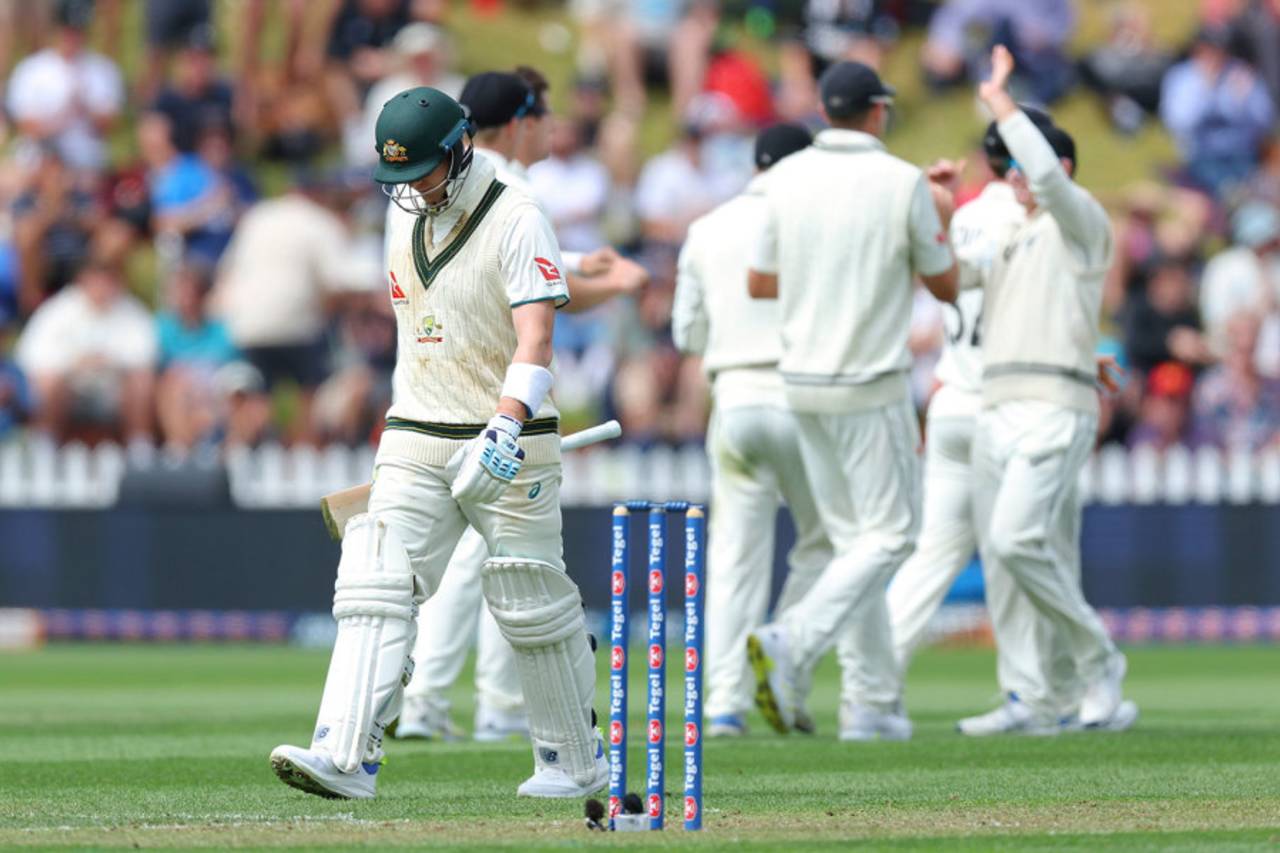Australia's bowling, which features a settled and successful top four, is a major plus, but the batting is a concern for the current World Test champions.
They are missing the ebullient David Warner's ability to harass opponents with his aggression as an opener. There is no like-for-like opener to replace Warner and what Australia have now is an unbalanced batting line-up.
By promoting
Steven Smith to open so they could include two allrounders, they are now left with a query at the top and an overabundance of aggression in the middle order.
The preference is to have a strong top six, but it's ideal when that batting order is balanced.
Smith is still Australia's best batter but at No. 4, not opening. As former Australian captain Tim Paine
wisely noted: "If I'm the opposition, I want him [Smith] opening."
Smith, like all players, is more vulnerable against the new ball. He'll occasionally succeed because he's a very good player, but he's unlikely to produce the consistently high scores he did in his heyday in the middle. An Australian order with Smith at No. 4 has the solid look that provides confidence that things will still be okay even if they go astray at the top.
The problem is if Smith bats at No. 4 where do you play Cameron Green, who is a must for Australia? Who would then open? Australia's most perplexing selection headache is the opening situation - there are no obvious replacements for Warner.
Test opener Usman Khawaja, who bats in the middle order for Queensland, is proof there is a paucity of top-order candidates at state level. However if you pick a new opener and play Green while batting Smith at four, then the likelihood is you have to omit
Travis Head. Head has had success in the Test side but Green is a better proposition both for the present and the future.
The pairing of Head and
Mitchell Marsh means Australia's middle order is heavily reliant on attacking batting. The fall-back position that Smith provided - an ability to rebuild methodically - is missing.
Australia's most perplexing selection headache is the opening situation - there are no obvious replacements for Warner
The reason both Marsh and Head vigorously attack the opposition is because their aggression covers up their technical failings. Their aggression has worked against the lesser sides, but will it succeed against strong sides like India?
If Marsh and Head have to try and dig Australia out of trouble against Jasprit Bumrah, Mohammed Shami and Mohammed Siraj, that will be a concern. Rest assured a vulnerable Australian top order will find itself in trouble if that Indian trio is fit and firing.
This is a situation with which the modern bowlers have to cope. They are going to face more aggressive batting from the opposition and that is a part of a modern Test bowler's life. At the moment the best bowlers are most likely to cope, but teams need to focus on unearthing lesser performers who have found a method that deals with the aggressive approach.
Relentlessly attacking the new ball and succeeding against good bowlers is an extremely rare skill and this was one of Warner's strengths. That's why Australia are desperately missing his undoubted talent.
Another aspect of the Australian team that will encourage opponents was their batting failure against the West Indies pace attack, especially newcomer Shamar Joseph. Once that type of susceptibility is established, it's very difficult to reverse the trend as it encourages opponents. This was a situation that rarely existed when Smith (at No. 4) and Warner were dominating Australia's batting.
The Test success of India, Australia and, more recently, England highlights the financial problems that torment the long form of the game. If the Big Three are able to continue rewarding their Test players handsomely but the remainder struggle financially, it does nothing for the competitiveness of an already ailing long form of the game.
The World Test Championship is a grand idea. However it will quickly lose glamour status if the Big Three dominate the coveted battle for the winner's mace.
Former Australia captain Ian Chappell is a columnist
